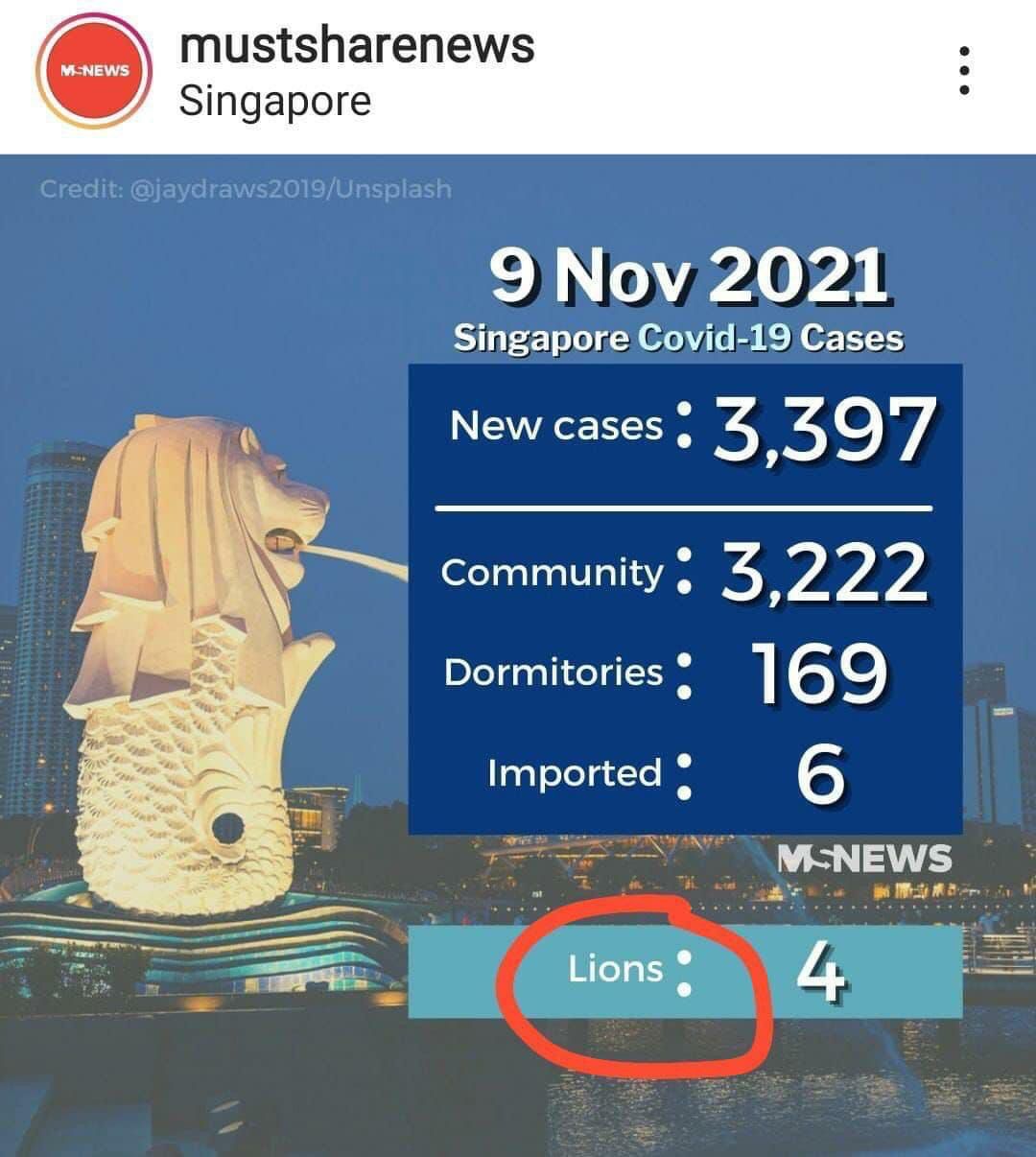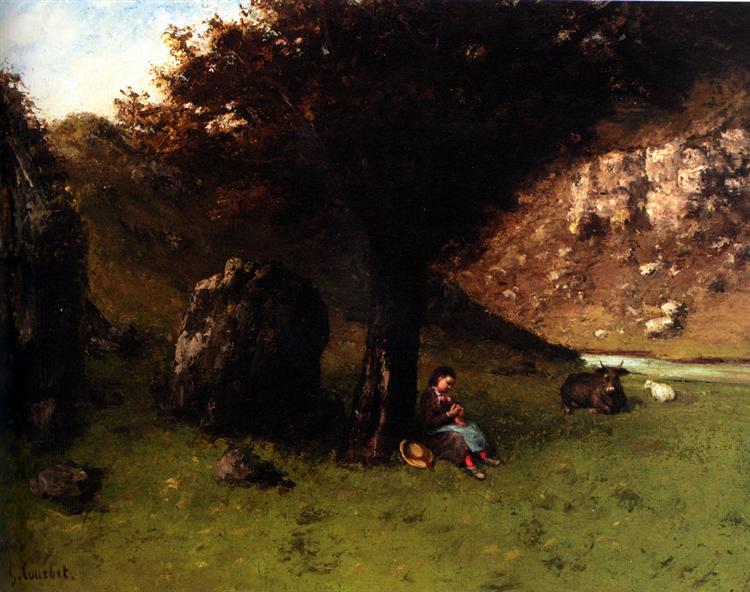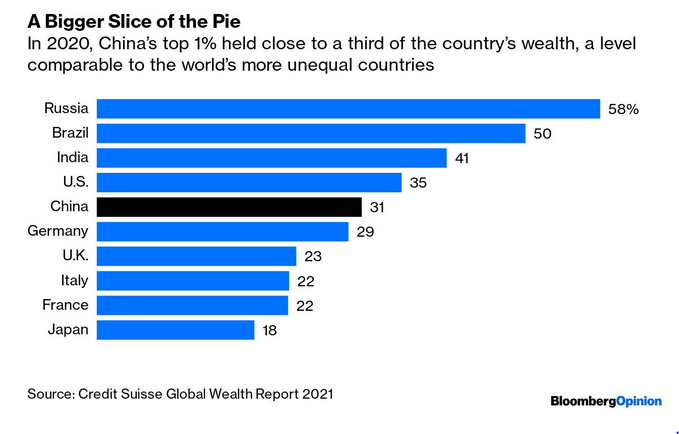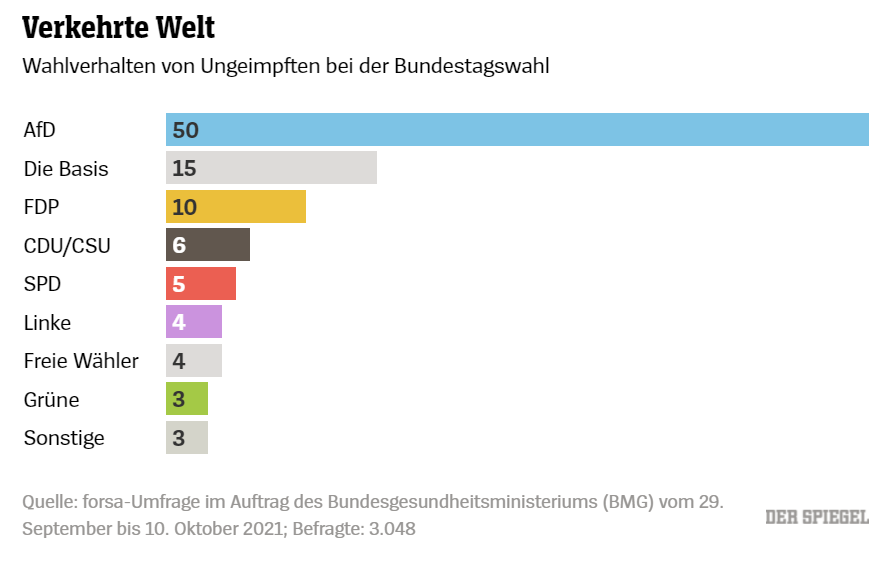|
You
can also view the message online
|
||||||||||||||
 Châtenay-Malabry (FR - 92290), November 15, 2021 EFITA newsletter / 1013 - European Federation for Information Technology in Agriculture, Food and the Environment Do not miss the Virus Jokes in English and French The informatique-agricole.org site now offers you the possibility of subscribing the RSS feeds of its two newsletters See RSS feeds to implement to ensure that you continue to receive this newsletter To unsubscribe this newsletter, please contact me directely: guy.waksman(a)laposte.net if this link Unsubscribe does not work. Please note that I changed the presentation of the links that are embedded in the name of the web service. 
To correspond with me (GW), please use this address: guy.waksman(a)laposte.net To subscribe the efita newsletter (please ask your friends and colleagues to test this link) Efita Newsletters subscription 11 November, end of the first WW - "Remembrance day" - Tribute to the rural world and farmer's wives in particular, for the centenary of the Battle of Verdun 1916 - 2016 (The horrors of the two world wars should be remembered more often to appreciate even more the happiness of living in peace in the European Union) Two world wars resulted in heavy casualties in our countryside and vast expanses of ruined rural landscape. In 1914, farmers had started the harvest and ploughing without suspecting that artillery and machine guns would finish digging the furrows on the land of our battered countryside. The men of our villages were forced to replace their work overalls with military uniforms. So much fervour for a war that was supposed to be short, but alas turned out to be a never-ending battle... Men left their farms without warning, the world turned upside down, and women quickly understood that an enormous workload was about to fall on their shoulders. Caring and brave women, and unsung female workers were called upon to take up the challenge of working the land. Imbued with a shared feeling of solidarity, the war forced these women to perform everyday agricultural tasks. With courage and dignity, they rolled up their sleeves to milk animals, dig the land, and sew, plant and harvest the agricultural produce necessary for the daily life of a French population in turmoil. Caring women and often poverty-stricken women, they brought up children, watched over elderly parents and each day put all their energy into the family, into keeping food on the table, and running the family farm while their men were subjected to waves of deadly shells flying over their heads... This sculpture honours those millions of women farmers, farmworkers and wives of farmers, courageous and dignified women who, in that period of sacrifice and pain, unfailingly ensured the survival of French agriculture, with the will to go on living to make a better future possible. For many of them the war was painful. The death or physical and mental wounds of a husband, son, or brothers and uncles forced these courageous women to assume the heaviest of workloads for many long years. Denis Mellinger Sculptor Another monument dedicated to rural women in Saint-Laurent de Cerdans (in the South of France, close to Spain) PrecisionAg VISION Conference, Agrulture Future in Focus January 18-19, 202 - Renaissance Phoenix Glendale Hotel & Spa - GLENDALE, Arizona, USA The VISION Conference, back in person, is the only event where North America’s precision agriculture and digital farming ecosystem meets to address emerging technology and data trends that will transform agribusiness. A forward-thinking advisory board is helping to set the tone for this year’s event that offers a broader scope and perspective beyond the ag retail sector. See thevisionconference.com Virginia student suspended after riding horse into high school It was a senior prank that officials at Gloucester High School in Virginia apparently didn’t find funny. Austin McGill ended up with a 10-day suspension, all because he rode his horse into school. And there was even talk of expelling him outright. See agdaily.com Before computers Covid-19 in Singapor: even the lions... Weekly newsletters about ICT in Agriculture in English and French Both newsletters have around 14000 subscribers. >>> Last weekly EFITA Newsletters in English (created in 1999) Efita Newsletters >>> Last weekly AFIA Newsletters in French (created more than 20 years ago in 1997) Afia Newsletters >>> Statistics for the last efita newsletter >>> Last issue of the afia newsletter >>> Last available satistics for the afia newsletter Nothing is more responsible for the good old days than a bad memory: Lavandières, 1888, de Paul Gauguin Neayi: Collective intelligence at the service of innovation of farming practices We design a web platform that brings together farmers and experts, to enable them to evaluate the relevance of a practice before implementing it. See Neayi Going beyond pure data on the way to sustainable and efficient farming. At SmartFarm, we know that there are many factors making farming difficult. Because of that, we created an all-in-one solution to support you when facing these daily challenges. We go beyond the pure gathering of data and provide you with the information you need to make the right decisions. To become more sustainable, manage your time better and save hard cash. SmartFarm is brand of AppsforAgri B.V. See smartfarm.nl Robotic Pruner Ready to Cut Down Production Problems in Apple Orchards, By Growing Produce While the whole of agriculture trends toward automation technologies, the production operations of tree fruit crops still requires a fair amount of manual labor, writes Thomas Skernivitz at Growing Produce. The pruning of apple trees, for instance, comprises about 20% of total preharvest production costs. Between 30 and 35 working hours of skilled labor are required per acre for manual pruning of apple trees. The dilemma increases ever more as the labor force diminishes and labor costs rise. “There is a need to find a potential solution to this problem,” Azlan Zahid, a graduate student at Penn State University, says. .../... See precisionag.com The Future of American Farming Demands High Speed Internet Solutions New report from Benton Institute for Broadband & Society recommends steps for connecting the farm office, field, and community. See precisionag.com Agrology Introduces Predictive Agriculture System for the Wine Industry and Specialty Crops Based on machine learning and AI, the Agrology system mitigates, predicts, and addresses issues with smoke taint, irrigation and climate change. See precisionag.com Growers Counter the Impacts of Drought and Water Scarcity with New Irrigation Optimization Suite Ceres Imaging introduces precision irrigation tools that integrate soil moisture sensors with aerial imagery. See precisionag.com Nothing is more responsible for the good old days than a bad memory: Breton, 1910, par Charles Rivière (1848-1920) EOS AgriSat First Satellite Launch By Dragonfly Aerospace EOSDA will become the first company with remote sensing technologies that launches its satellite constellation specifically focused on the agricultural sector. See precisionag.com Smart Fertilizer Software, SupPlant Launch App for Improving Water and Fertilization Efficiency GroPlant has been launched to coincide with COP26 and is a partnership between London-based Smart Fertilizer Software and precision ag company SupPlant. See precisionag.com A farmers' assistant Helps to run the most efficient dairy farm by working with farmers to identify issues, recommend solutions and streamline operations. See connecterra.io More government investment in innovation needed for food resilience, says USDA's Vilsack COP26! AFN, by Jennifer Marston “We have to grow more food in the next 30 years than in the previous 10,000, and we need new answers.” That was the summary from David Farquhar, CEO of indoor agtech startup Intelligent Growth Systems (IGS), speaking at an event on climate-smart innovation on the sidelines of the COP26 summit this week [disclosure: AgFunder, AFN‘s parent company, is an investor in IGS.] The event featured a discussion — between US Secretary of Agriculture Tom Vilsack, Debbie Stabenow, chairwoman of the US Senate Committee on Agriculture, Nutrition, and Forestry, and S2G Ventures managing director Sanjeev Krishnan — on how innovation could provide those “new answers,” and what role governments can play. Vilsack kicked off by announcing that the US Department of Agriculture (USDA) is investing $25 million across 18 climate-smart innovation projects for food and agriculture. While he didn’t give further details during the talk, he said the $25 million is “one small part of a larger focus of the government’s on ag innovation.” The main mission of innovation, he added, should be about reducing the financial risk that farmers face when they consider new tools and practices that can build up climate change resilience. .../... See agfundernews.com In Glasgow, I saw three big shifts in the climate conversation, by Bill Gates, November 08, 2021 .../... So it was great to hear President Biden and other leaders repeatedly raising the importance of adaptation. I got to join the president, along with officials from the United Arab Emirates, to launch a program called Agricultural Innovation Mission for Climate. It’s designed to focus some of the world’s innovative IQ on ways to help the poorest people adapt, such as new varieties of crops that can withstand more droughts and floods. More than 30 other countries, as well as dozens of companies and nonprofits (including the Gates Foundation), are already supporting it. As part of that effort, I joined a coalition of donors that pledged more than half a billion dollars to support the CGIAR’s work to advance climate-smart innovations for smallholder farmers in sub-Saharan Africa and South Asia. Some people look at the problems that still need to be solved and see the glass as half-empty. I don’t share that view, but this is what I would tell anyone who does: The glass is being filled up faster than ever. If we keep this up—if the world puts even more effort into innovations that reduce the cost of getting to zero and help the poorest people adapt to climate change—then we’ll be able to look back on this summit as an important milestone in avoiding a climate disaster. See gatesnotes.com Nothing is more responsible for the good old days than a bad memory: Veille Bretonne (1910), par Henri Guinier (1867-1927) Future Farming > Machine Vision for Agriculture Today's agriculture is facing an increasing number of challenges – high production and labor cost despite the lack of skilled workers is only one out of many. To face these challenges, machine vision has become an integral part of many automation and robotics applications used in agriculture. > Video: Machine Vision & Agriculture 4.0 > Video: Plant Protection with MVTec > Weed seed bites the dust > Preventing grain spoilage and fire > Can it be done? Farming without glyphosate Right now, those in arable farming are watching closely what will happen with banning glyphosate – and wondering how they will manage without it. > Discover new Ag Tech auto steer system The availability of economical, high-precision automated steering boosts the adoption of precision farming technology across all size farms. > Variable planting: Planting potatoes using precision technique Arable farmers are very interested in variable planting of ware potatoes. > Spot spraying: Spot spraying on target to cut inputs A new 3S Spot Spray Sensor scans crops and analyses the images to identify diseases, pests and nutrient requirements. > Greenhouse robots: Iron Ox launches autonomous greenhouse robot According to Iron Ox, Grover can lift more than 1,000 pounds and assists in the monitoring, watering and harvesting of a wide variety of crops. > Tech adoption: Study: Don’t exclude small farmer from agtech innovations A recent study by the UN shows why the (in)ability to adopt digital innovations can increase inequality and poverty in Brazilian agriculture. > Electrification: CNHi to use Monarch Tractor electrification technology CNH Industrial has entered into an exclusive, multi-year licensing agreement for electrification technologies with Monarch Tractor. > Soil monitoring: NASA Harvest explores new methods for monitoring soil moisture New methods for monitoring soil moisture use a combination of machine learning models and satellite-based radar waves. Fonterra signs distribution deal with Dutch artificial intelligence company Stuff, by Bonnie Flaws (feat. Connecterra) .../... Fonterra has signed a deal with Dutch company Connecterra to provide dairy farmers with insights using artificial intelligence. The agreement will give farmers access to Connecterra’s intelligent dairy assistant platform (Ida), which collects behavioural data from cows using collar-mounted sensors and combines it with data from internet-connected systems and equipment on-farm. .../... See stuff.co.nz The world benefits when farmers are supported as entrepreneurs, by Stuart Taylor Farmers are natural entrepreneurs. Here in New Zealand, as we work to produce the food that our country and the world needs, we take risks, see solutions to challenges when they arrive, and solve problems. We’re constantly questioning and changing what we do. Many of our efforts these days are devoted to the economic and environmental sustainability of our operations. And we approach it all with a spirit of entrepreneurship. .../... See globalfarmernetwork.org Ascribe Bioscience gets $2.5m to fight crop loss with soil ‘signaling molecules’ Exclusive! AFN, by Jennifer Marston .../... The seed capital will go towards the commercial development of Ascribe’s main product Phytalix, which is a biopesticide that ‘tells’ a plant when there is a pathogenic threat nearby. Plants respond to this warning by priming their immune systems in defense. Phytalix can be applied as a seed treatment, foliar spray, or soil amendment, and has shown the ability to combat a wide range of pathogens including fungi, bacteria, nematodes, and viruses in a variety of crops. Founded in 2017 by professors Dan Klessig and Frank Schroeder, Ascribe was spun out of the Boyce Thompson Institute at Cornell University. Jay Farmer, Ascribe’s CEO, tells AFN that the company is “the marriage of two academic fields” – metabolomics and plant defense signaling. “What we’re doing at that intersection is really looking for natural small molecules, that already exist in the environment, that plants have evolved to pay attention to,” he says. The Ithaca, New York-based startup identifies such molecules and harnesses them into biopesticide products like Phytalix, or biostimulants which offer a more nature-based approach to crop protection than toxic chemical fungicides. Farmer likens Ascribe’s products to a vaccine. “You expose a human body to a pathogen, or a signal of a pathogen, and then the immune system recognizes it and reacts more quickly. Mechanically, it works a little bit differently in plants, but it’s a similar idea,” he explains. “When a pathogen does arrive, the plant can respond much more quickly. And so essentially, this product is using the plant’s natural defenses to make them more tolerant against a wide array of pathogens.” .../... See agfundernews.com Nothing is more responsible for the good old days than a bad memory: La Petite Bergère de Gustave Courbet Why it is important to evolve from precision farming to Agriculture 4.0, AFN, by guest contributors: Filippo Renga, Andrea Bacchetti, Chiara Corbo & Dana Bonaldi .../... This analysis highlighted that one crucial aspect of Agriculture 4.0, together with the above-mentioned digitalization process, is the opportunity for farmers to connect with the different players in the food chain to exchange useful data and services. This generates new business opportunities and efficiency for both farmers and input, service, and technical providers. For instance, while harvesting, farmers can better coordinate with transportation and food processing companies; an original equipment manufacturer can offer monitoring and maintenance services based on machine-generated data; or agronomists can offer treatment insights remotely. Additionally, data collected along the entire supply chain can enhance transparency, improve food traceability, and generate new market opportunities by enabling the sharing information with consumers. In Italy, for example, several agrifood companies are now basing their value proposition on transparency, traceability, and guarantee of origin. Finally, agricultural data can be directly monetized: even if still not very common, we have studied interesting cases of farmers sharing their data for a fee on platforms that analyze them in order to produce accurate insights and forecasts – for example, on climatic events, market trends, or commodities prices. In the future, agricultural companies could have the profitable opportunity to also become service providers, diversifying their core business − primary production − into new areas by offering services and data. .../... See agfundernews.com Regenerative Agriculture: The Next Trend In Food Retailing, by Jack Uldrich, Forbes Councils Member .../... At its most basic level, regenerative agriculture is a more nature-friendly way of farming. It can be thought of as the next step beyond organic and sustainability. Although there is not yet an officially agreed-upon definition, regenerative agriculture employs farming and grazing practices that restore degraded soil, improve biodiversity among pollinators (especially bees and butterflies) and increase carbon capture in the soil to create long-lasting environmental benefits. See forbes.com Replay - Online workshop ‘Strength in numbers - network to innovate’ You can rewatch the workshop organised by the Estonian Rural Network on networking and innovation. It was about knowledge exchange between projects from different countries, focussing on how innovation can be brought about in the agricultural sector. There were 3 thematic sessions on Soil and plant production, Food production and processing and Livestock. See video Research and innovation at the Farm to Fork conference At the Farm to Fork Conference 2021, session #5 was on research and innovation. 7 Horizon 2020 projects presented inspiring solutions to food system challenges. Speakers from the EU Commission presented Horizon Europe and its funding opportunities. Finally, a discussion was held between representatives of farmers, food businesses, consumers and researchers on critical needs in terms of research and innovation within the food system. See video Nothing is more responsible for the good old days than a bad memory (?????): Heissische Landschaft, von Andreas Achenbach (German, 1815-1910) Supply chain overtaking ag & land use as main source of food emissions: FAO New data! AFN, by Jack Ellis A new study from the UN Food and Agriculture Organization (FAO) indicates that the supply chain is the fastest-growing source of greenhouse gas (GHG) emissions from global food systems, outpacing agricultural activity and land use changes. Released in pre-print yesterday at the COP26 UN Climate Change Conference in Glasgow, UK, the paper analyzes measurements of GHG emissions — including carbon dioxide, methane, and nitrous oxide — from 236 countries between 1990 and 2019. The data was drawn from the FAO’s own FAOStat database. The world’s agrifood systems were responsible for 31% — 16.5 billion metric tons — of total “anthropogenic” GHG emissions by carbon dioxide equivalents (CO2eq) in 2019, according to the study. That represents a 17% increase from 1990 (the global population has grown by around 45% over the same timeframe, according to World Bank figures.) .../... See agfundernews.com House passes $1 trillion infrastructure bill; ag groups react, by Agdaily Reporters The House of Representatives voted late Friday night 228 to 206 to approve the bipartisan infrastructure package, called the Infrastructure Investment and Jobs Act of 2021. The Senate already passed the bill back in August by a vote of 69 to 30, clearing the way for legislation to become law, assuming the president signs it. This would be the biggest investment in roads and bridges in decades. The Infrastructure Investment and Jobs Act includes funding important to farmers and ranchers — including $17.3 billion for the nation’s ports and inland waterways and $2 billion specifically for rural broadband access. New spending in the bill is paid for through unused COVID relief funds, bonds and extensions of various government fees, and the bill does not include tax increases for individuals or farms. .../... See agdaily.com Why (and how) to use mind maps for online teaching COVID-19 has directly affected 90% of the world’s students. The complete shift to online classrooms has, arguably, been the most significant challenge for teachers and students. This eBook will explore the side effects of this shift to online teaching and highlight the challenges and potential solutions. - Read more to learn about: - The side effects of shifting to online teaching - The solutions for an online school environment - Mind mapping in online teaching - How to create templates for online teaching See channelfutures.com Crédit Suisse Global Wealth Record: In 2020, China's top 1% held a third of the country's wealth, a level comparable to the world's more inequal countries Metaverse? Are You Kidding Me?! By Charles M. Blow …/… I have been pulling back from social media for a while now, using it mostly to advertise my column, TV segments and other ventures I’m involved in. I must say that I feel like an addict finally getting clean. I am surprised — and embarrassed that I am surprised — at how meaningful it is to me simply to be more present, to strike up conversations with strangers, not to feel that I need to document my every moment for a voracious virtualness, not to be so immersed in a screen that I miss the sunset. I am more empathetic and diplomatic when I disagree with someone in person. Situations that I would have breezed by online, I linger on in person. The world is not perfect. It’s not curated and filtered, and returning to the reality that that imperfection makes the world special has caused a shift in me. I now regret, though I try not to, years of wasted time in virtual space, doing all the things people told me I should: worrying about engagement, timing posts for optimization, reviewing analytics to figure out which things resonated and which didn’t. I was continuously carving and crafting an altered, more “likable” image of myself, that in the end I deemed too controlled to be completely true. So, as Facebook and others move toward the metaverse, I will choose to move toward a truer version of myself, one that lives more fully in the here and now. See NYT We’ve just updated all of our data on global CO2 emissions Explore all the metrics for any country in our CO2 Data Explorer, and read in more detail in our entry on CO2 and Greenhouse Gas emissions.
Conservation Commons >> Our Mission The Conservation Commons unites the Smithsonian’s cultural and scientific expertise to advance research and share knowledge to sustain Earth’s biodiverse ecosystems. We engage a spectrum of audiences across disciplines to integrate science and practice into conservation actions – convening, amplifying, and catalyzing ideas to improve conservation outcomes. >> What is the Smithsonian Conservation Commons? The Smithsonian Conservation Commons is an action network within the Smithsonian Institution (SI), harnessing innovative approaches across science and culture to impact conservation practices worldwide. As part of the Smithsonian’s broader Strategic Plan, the Commons is mobilizing internal capacity and major partner institutions to build a global community of practice that breaks down barriers to: Forming a holistic understanding of the value of science and conservation of nature. Engaging communities with science to manage sustainable land and seascapes. Tracking the movement of species to inform conservation planning. Training the next generation of conservation scientists, communicators, and other change leaders. The Commons scales up the reach and impact of the wealth of conservation science produced and managed by its 9 research centers, 19 museums, and the National Zoo. By taking advantage of SI’s ability to transform complex scientific research into powerful communication tools, the Commons is rapidly becoming a unique platform for public education and awareness. >> The Conservation Commons is led by: - National Zoological Park (NZP) and Smithsonian Conservation Biology Institute (SCBI) - Smithsonian Environmental Research Center (SERC) - Smithsonian Tropical Research Institute (STRI) - National Museum of Natural History (NMNH) - Smithsonian Marine Station (NMNH-SMS) - Center for Folklife and Cultural Heritage (CFCH) - Smithsonian Science Education Center (SSEC) - Office of International Relations (OIR) - National Air and Space Museum (NASM) - Smithsonian Facilities (SF) - Smithsonian Enterprises (SE) >> How we are changing the narrative: Globally, billions of dollars are aimed at adapting, mitigating, offsetting, and recovering from environmental damage caused by human impacts. However, too often these approaches are undertaken without robust backing from evidence-based science. Similarly, scientists are perennially challenged by the lack of opportunity to translate their work into conservation action and conservationists are increasingly frustrated by the lack of accessible scientific information to inform decisions and interventions. While science is critical to informing lasting solutions, solving major conservation problems requires moving beyond the status quo by bridging efforts across the sciences, arts and humanities, and engaging communities in the process to ensure equitable and ethical conservation. The Smithsonian, with its diverse, deeply-rooted expertise and unparalleled outreach impact, is uniquely positioned to transform human attitudes and forge lasting solutions that address global conservation targets for the benefit of people and nature. See conservationcommons.si.edu/earth-optimism Nothing is more responsible for the good old days than a bad memory: La moisson par Victor Gabriel Gilbert (1847 - 1933)
How cement may yet help slow global warming (The Economist) It is a big source of emissions, but might one day be the reverse .../... Everyday cement, also known as Portland cement, was invented in the early 19th century by Joseph Aspdin, an English stonemason, and developed into its modern incarnation by his son, William Aspdin. The older Aspdin named his invention for its resemblance to the grey stone, quarried from the Isle of Portland in Dorset, England. Portland cement is made by first heating limestone and clay in a kiln to around 1,500ºC. The resulting mixture—known as clinker—is then mixed with gypsum and pulverised into fine powder, which can then be mixed with water and aggregates (such as sand and gravel) to make concrete. Significant amounts of carbon dioxide come from the limestone as it breaks down in the kiln. Yet more is emitted by the fossil fuels burned to heat the kiln in the first place. For every tonne of cement produced, around a tonne of carbon dioxide is released. The 5bn tonnes of cement produced each year account for around 8% of the world’s anthropogenic carbon-dioxide emissions. If the cement industry were a country it would be the third-largest emitter in the world, after China and America. Fortunately, as we discuss in this week’s Science section, there is growing interest in thinking about ways to reduce cement’s enormous environmental impact. …/… There was a time when Islamic civilization led the world. Muslim trade networks spanned the globe. Philosophers, mathematicians, and theologians gathered in cosmopolitan cities like Baghdad to debate controversial ideas. Civil society was protected from oppressive despots by Islamic law. Can the Islamic world revive this lost liberal tradition? See Mustafa Akyol: A liberal vision of Islam Nothing is more responsible for the good old days than a bad memory: Heartbreak by Charles Sprague Pearce (1851-1914)
Three rich brothers Three rich brothers each wanted to do something special for their elderly mother on Mother's Day. The first brother bought her a huge house. The second brother gave her a limousine, with a driver. The third brother remembered that his mother used to love to read the Bible, but couldn't see well anymore, so he got her a specially trained parrot that could recite any verse from the Bible on demand. Soon, the brothers received thank-you notes from their mother. The first son's note said, The house you bought me is much too big! I only live in a small part of it, but I have to clean the whole thing! The second son got a note that said, I rarely leave the house anymore, so I hardly use the limo you gave me. And when I do use it, the driver is so rude! The third son's note said, My darling baby boy, you know just what your mother loves! The chicken was delicious! The distribution of this efita newsletter is sponsored by vitisphere.com Please, contribute to the content of your efita newsletter, and advertise your events, new publications, new products and new project in this newsletter. Without your support, it will not survive! Contact: Guy WAKSMAN E-mail: guy.waksman(a)laposte.net To read this newsletter on our web site See Afia The archives of this newsletter See Afia About the EFITA mailing list You can use the efita moderated list (> 15000 subscribers) to announce any event / product / web site / joke (!) related to IT in agriculture, environment, food industry and rural areas. If you want to subscribe a friend, please fill in his form. If you do not wish to receive our messages, please fill in the following form... |
























